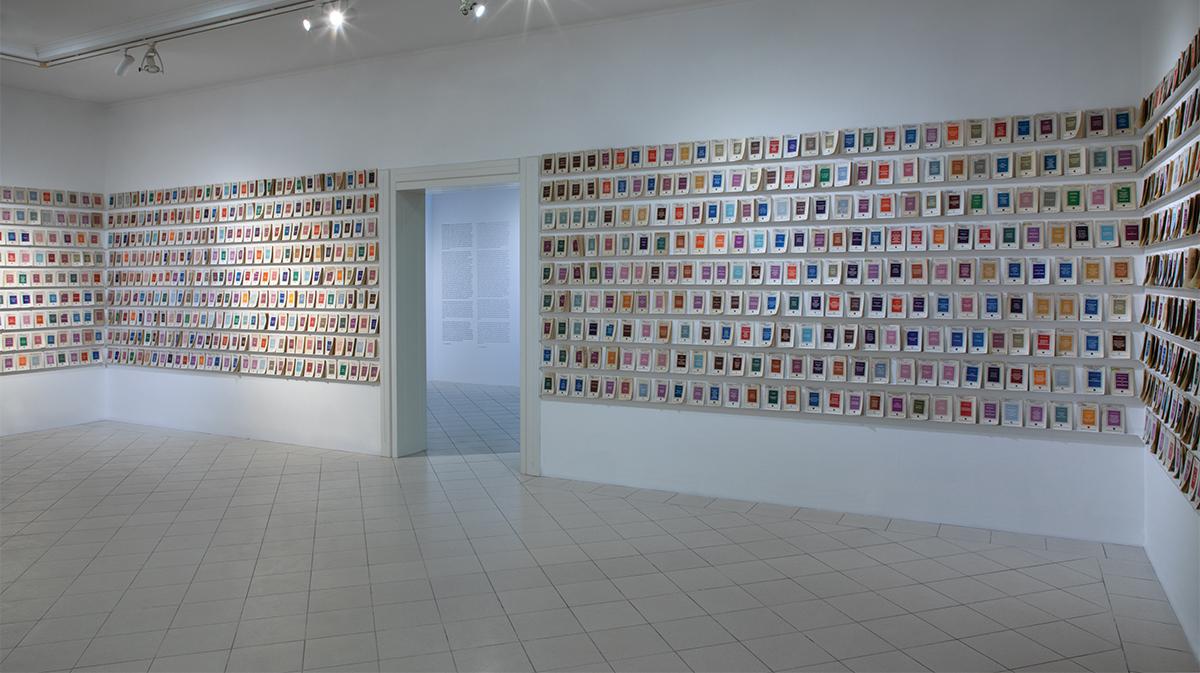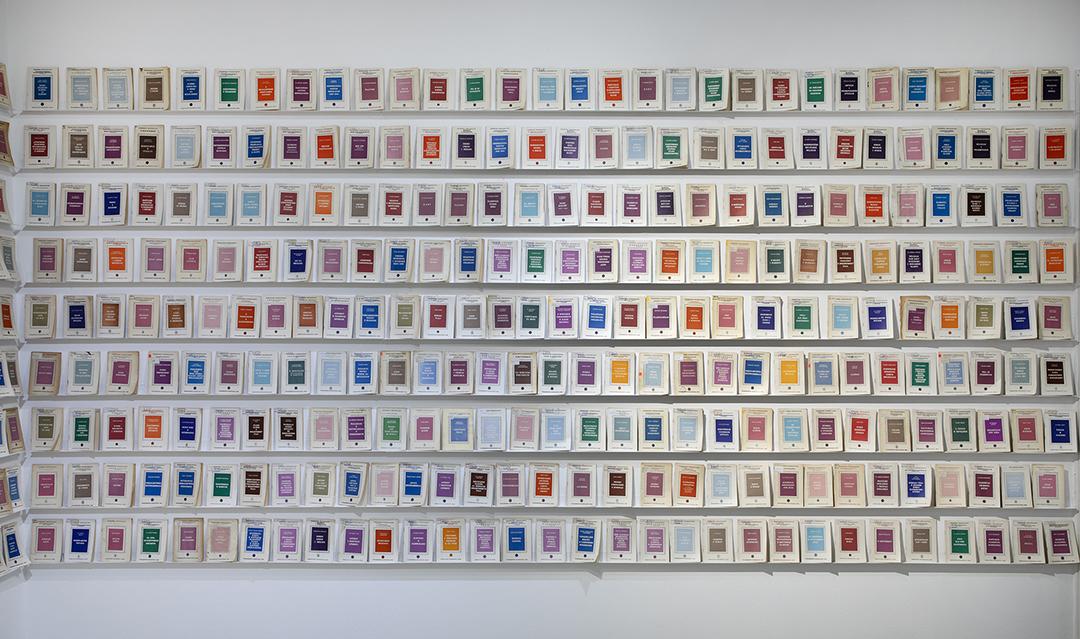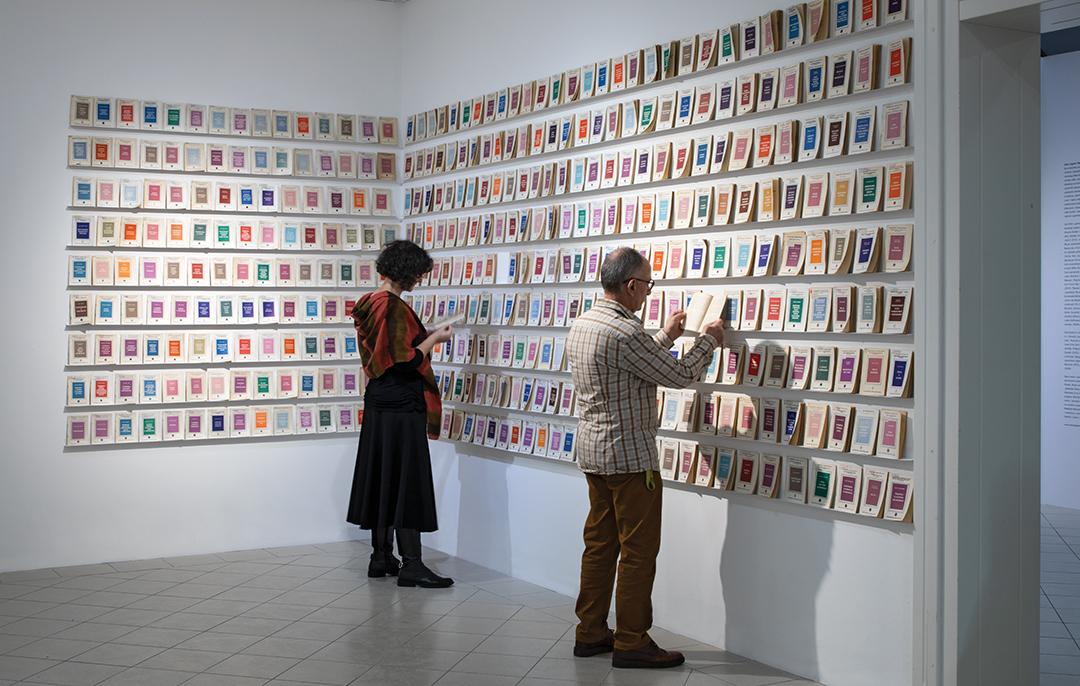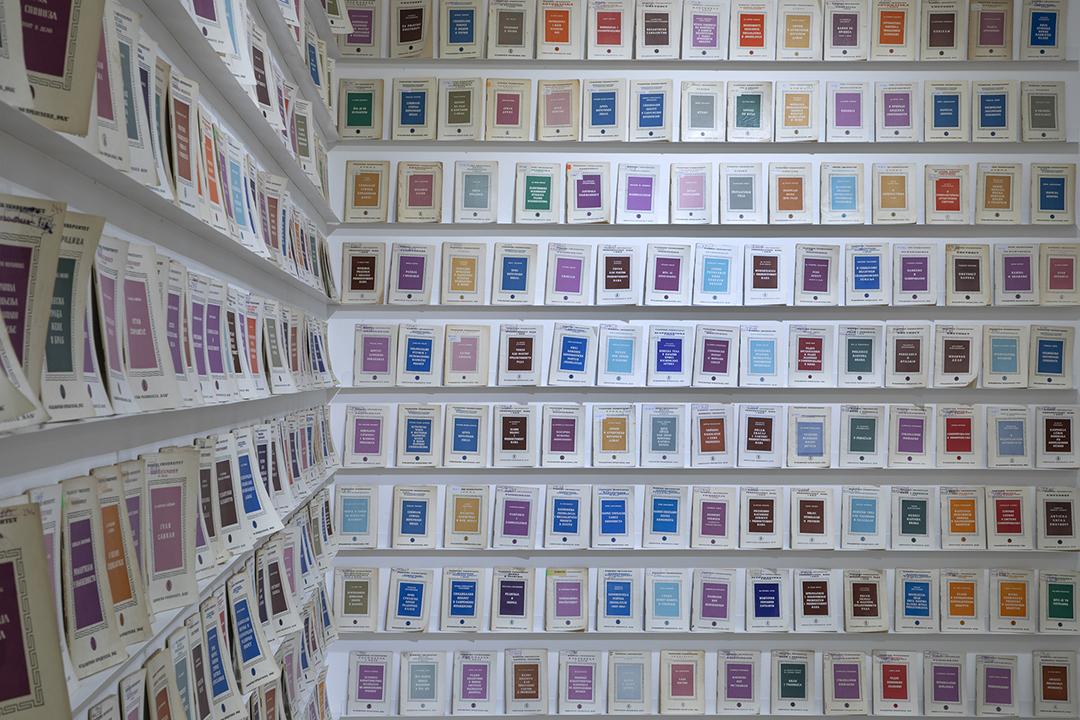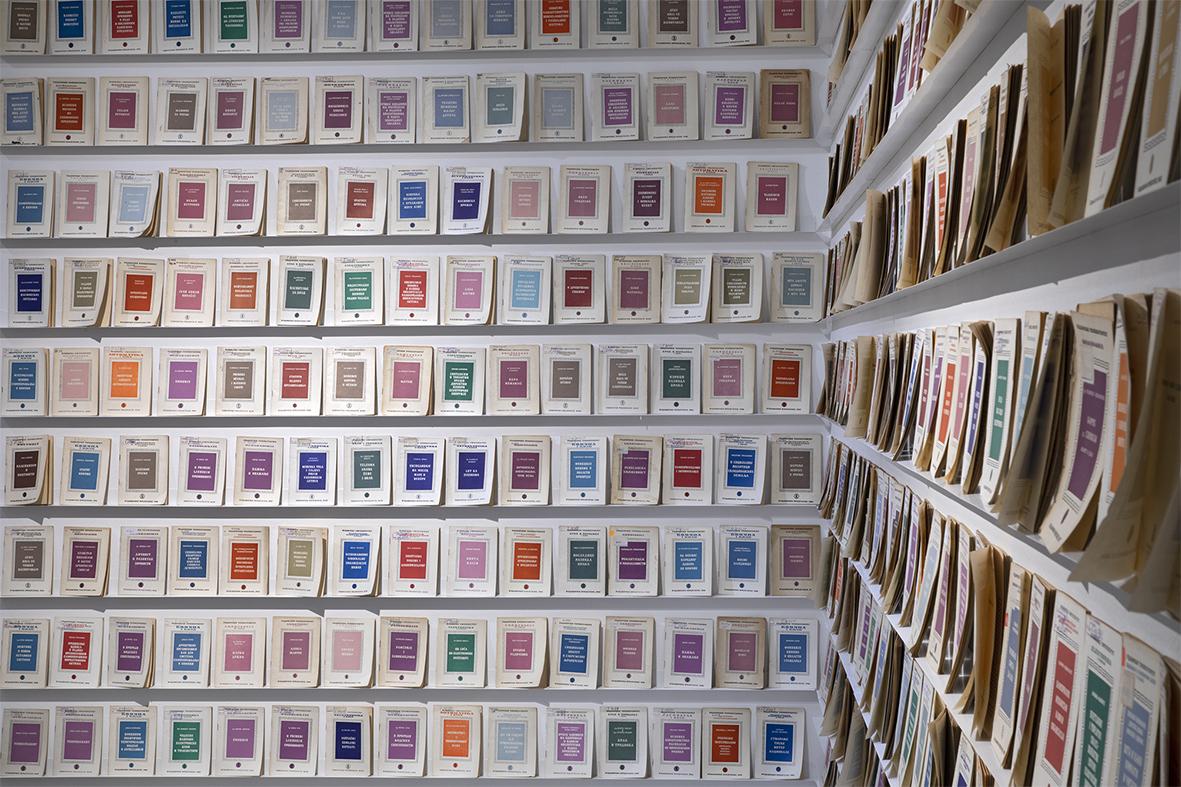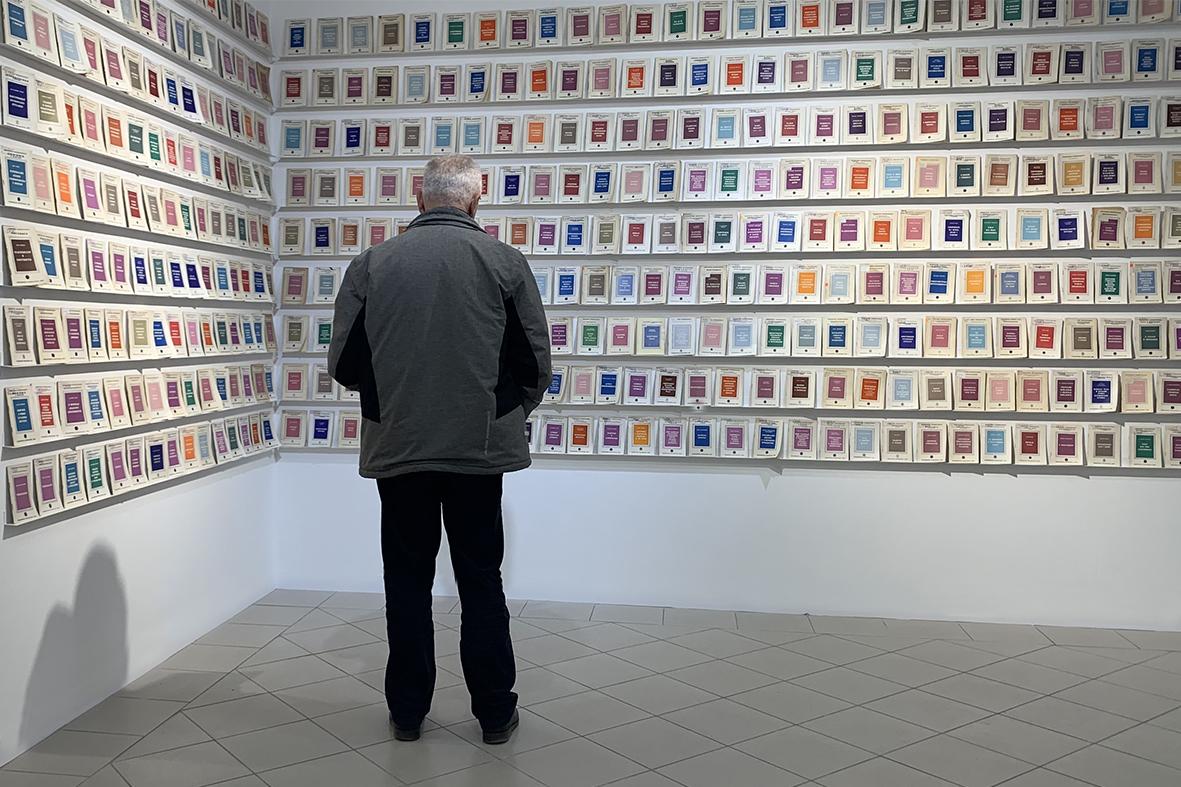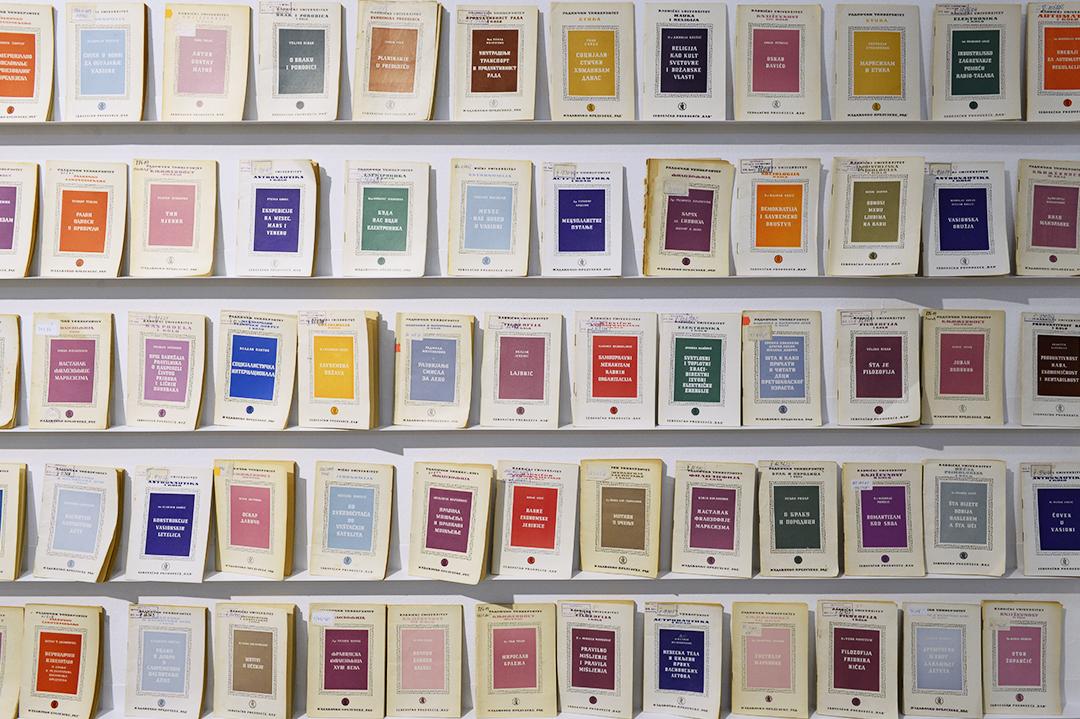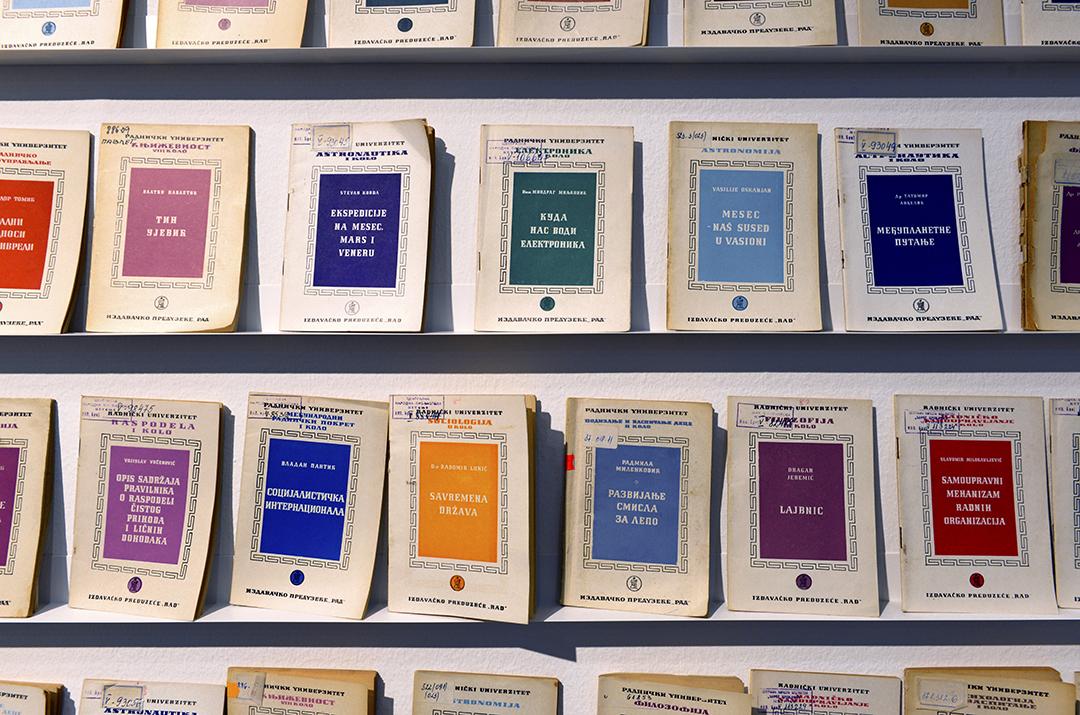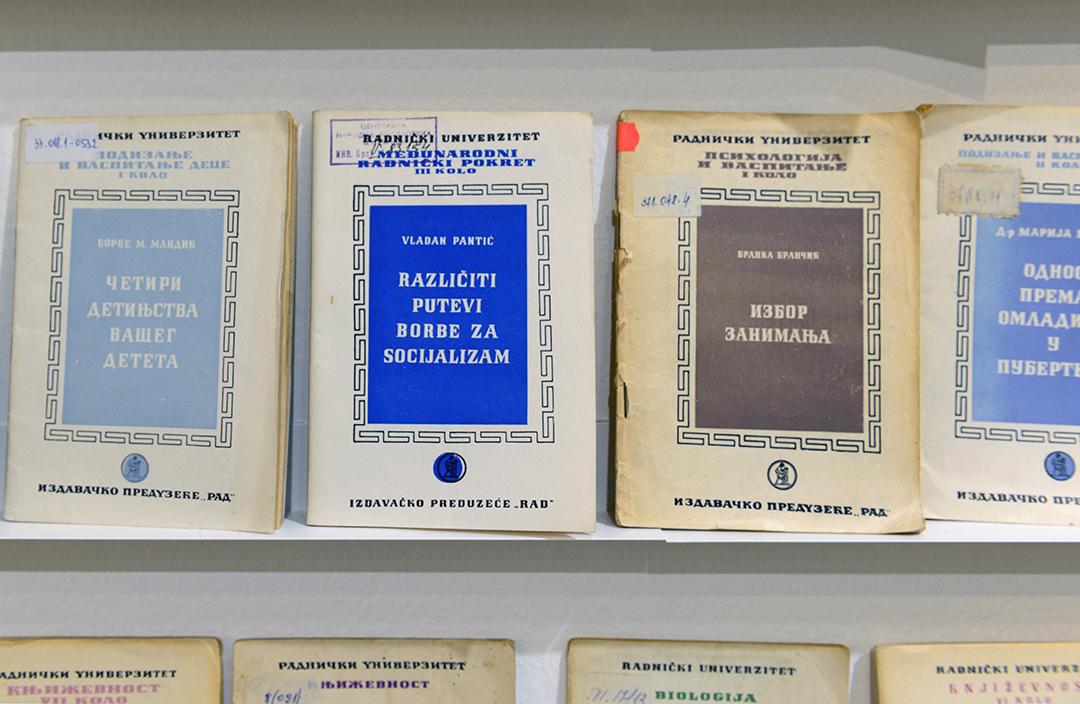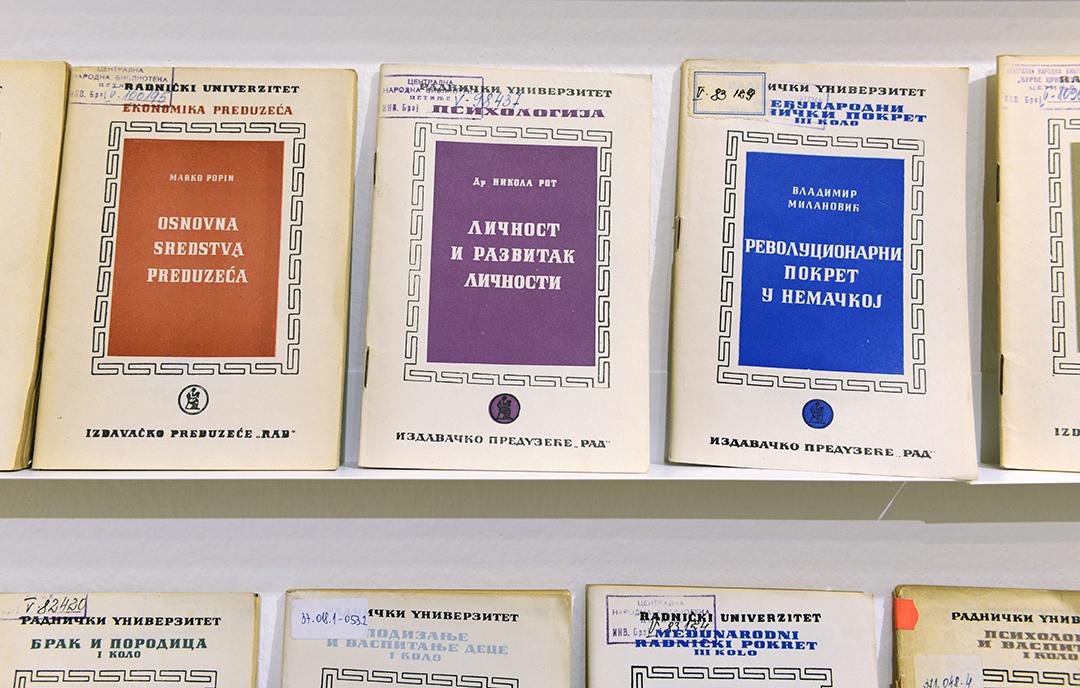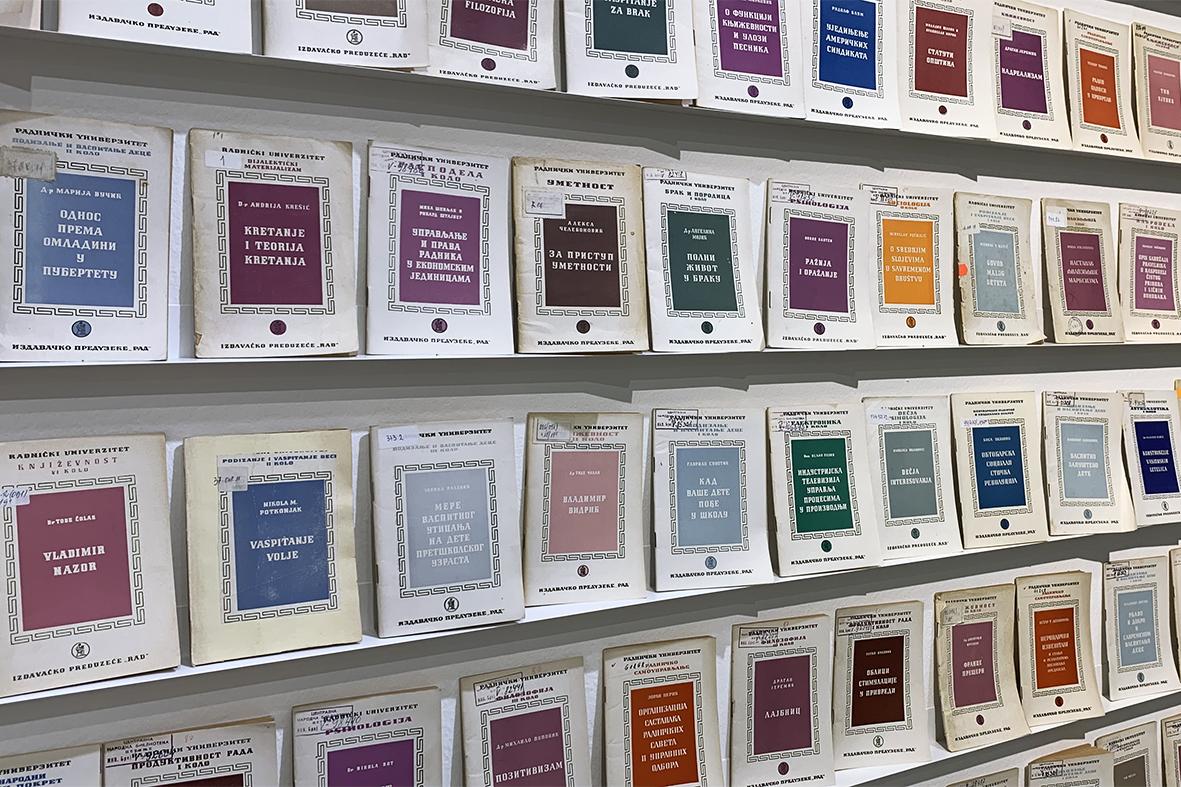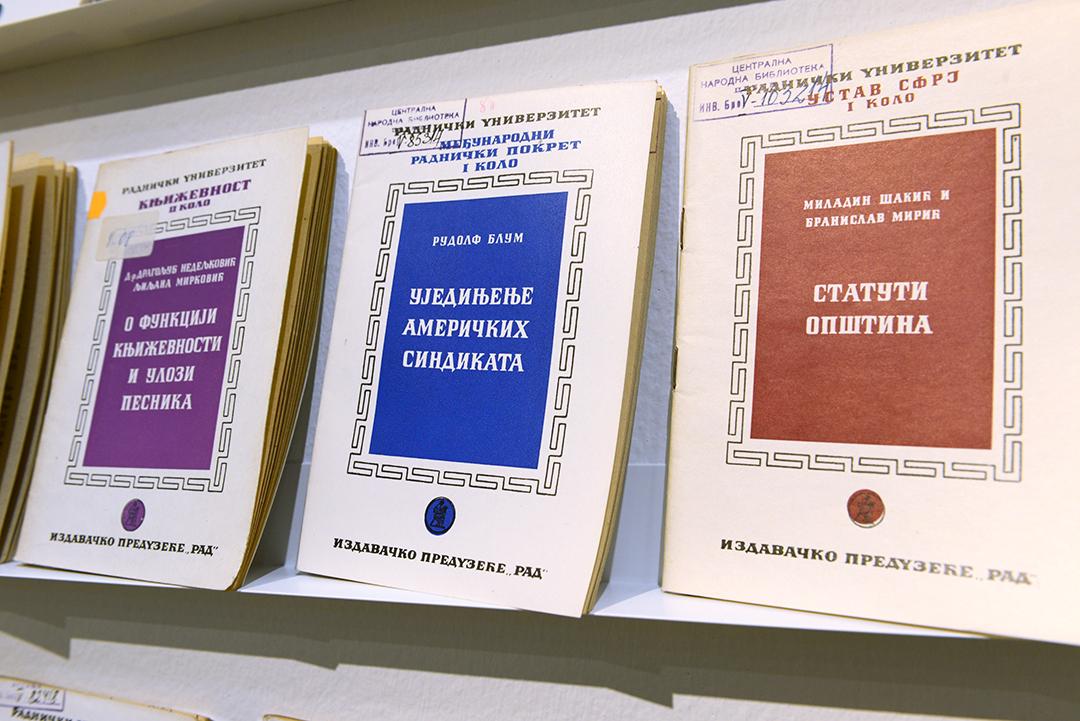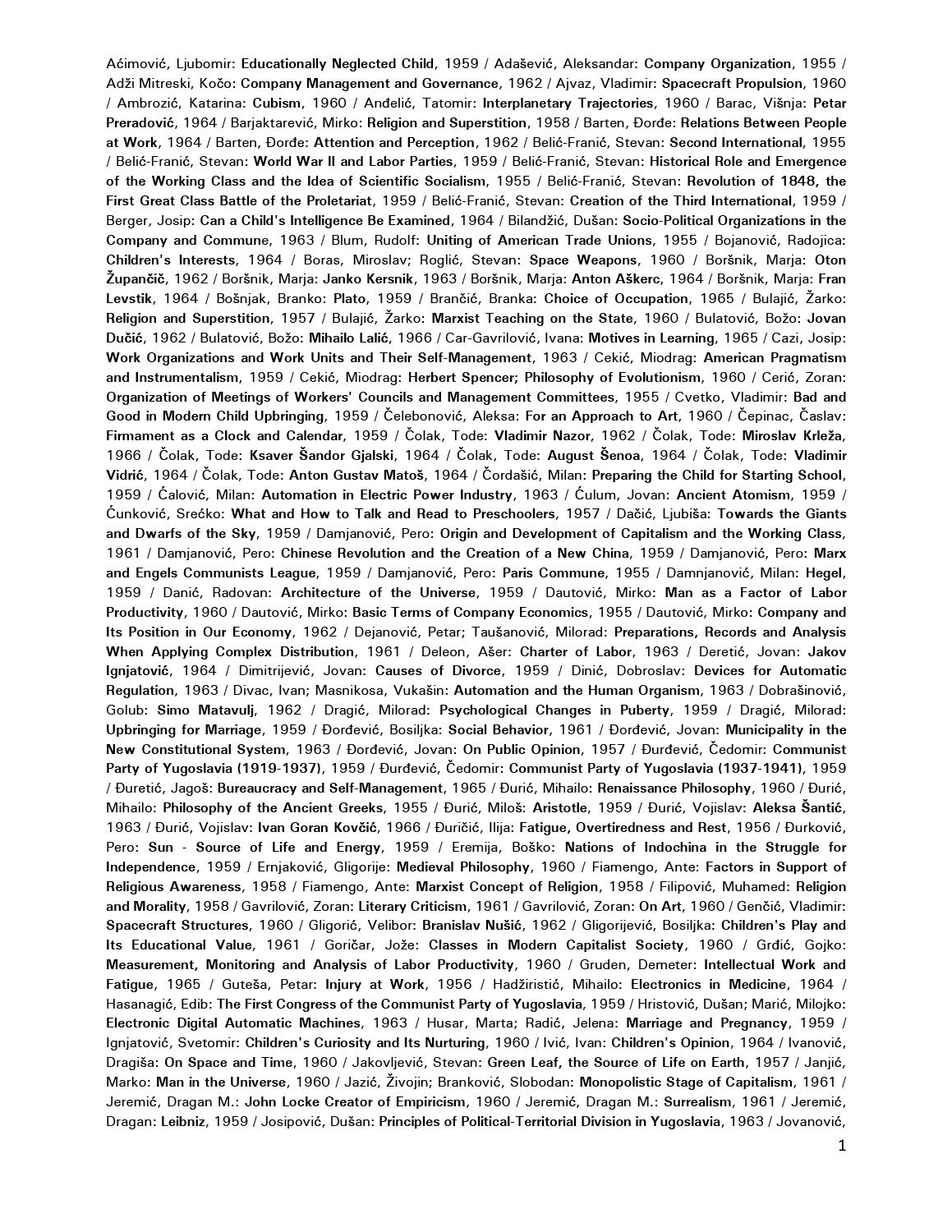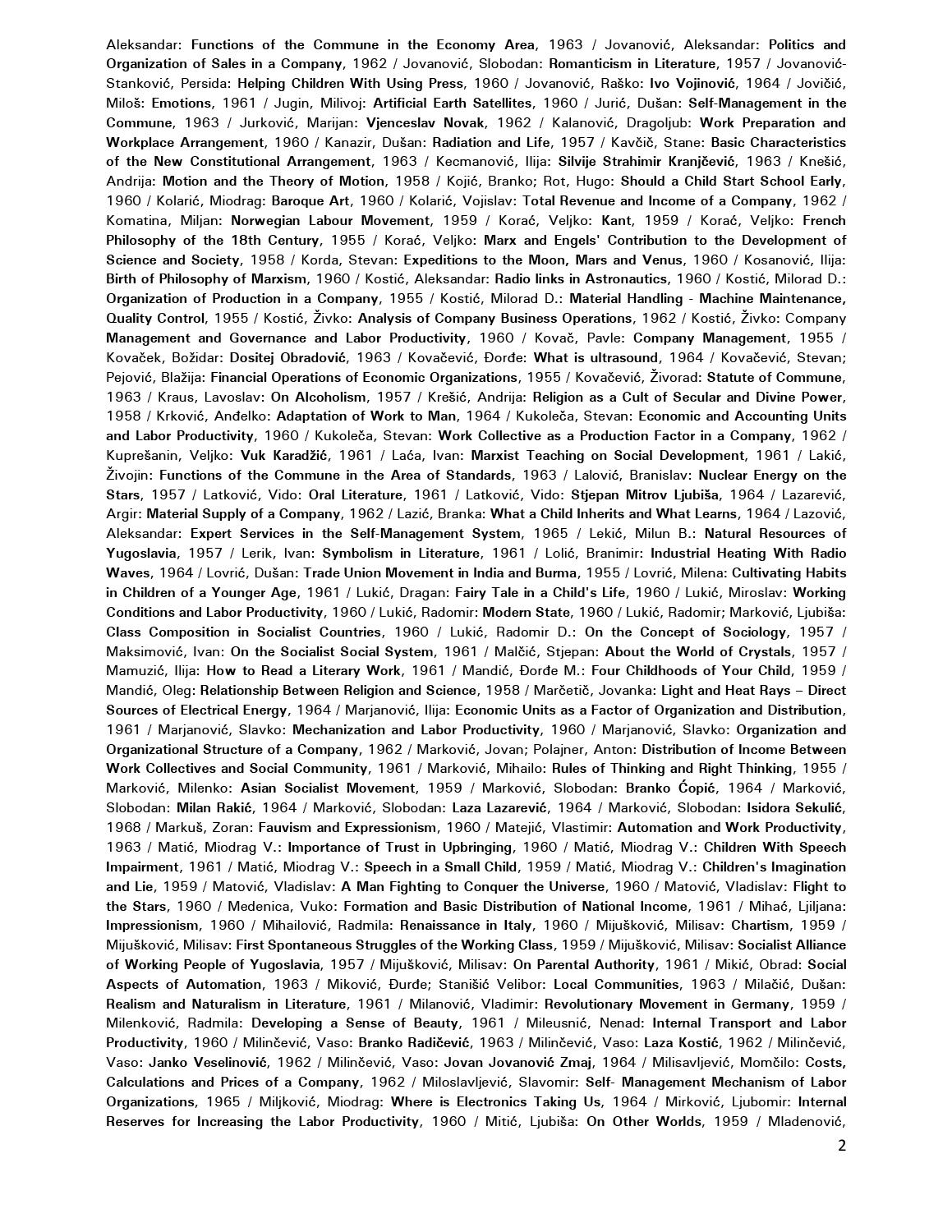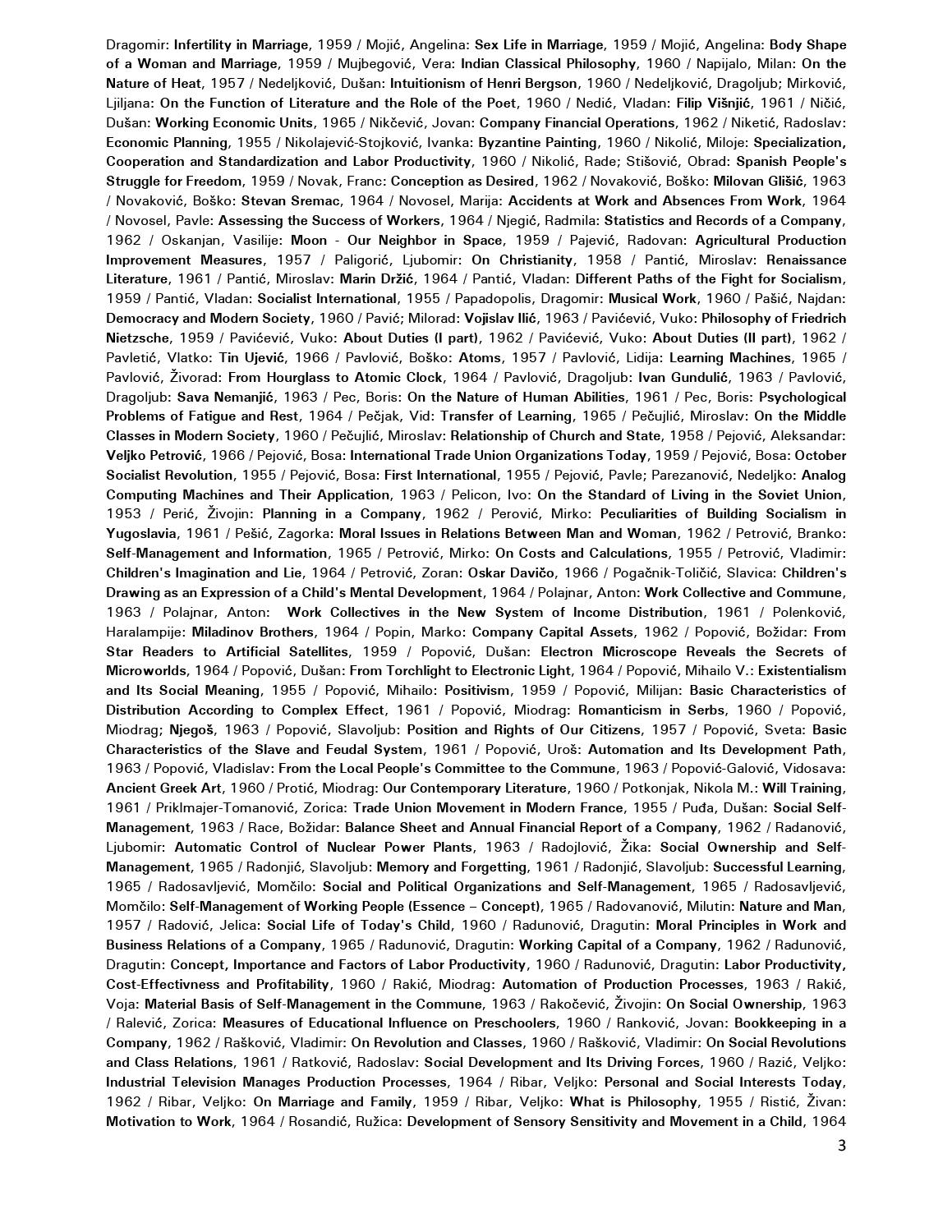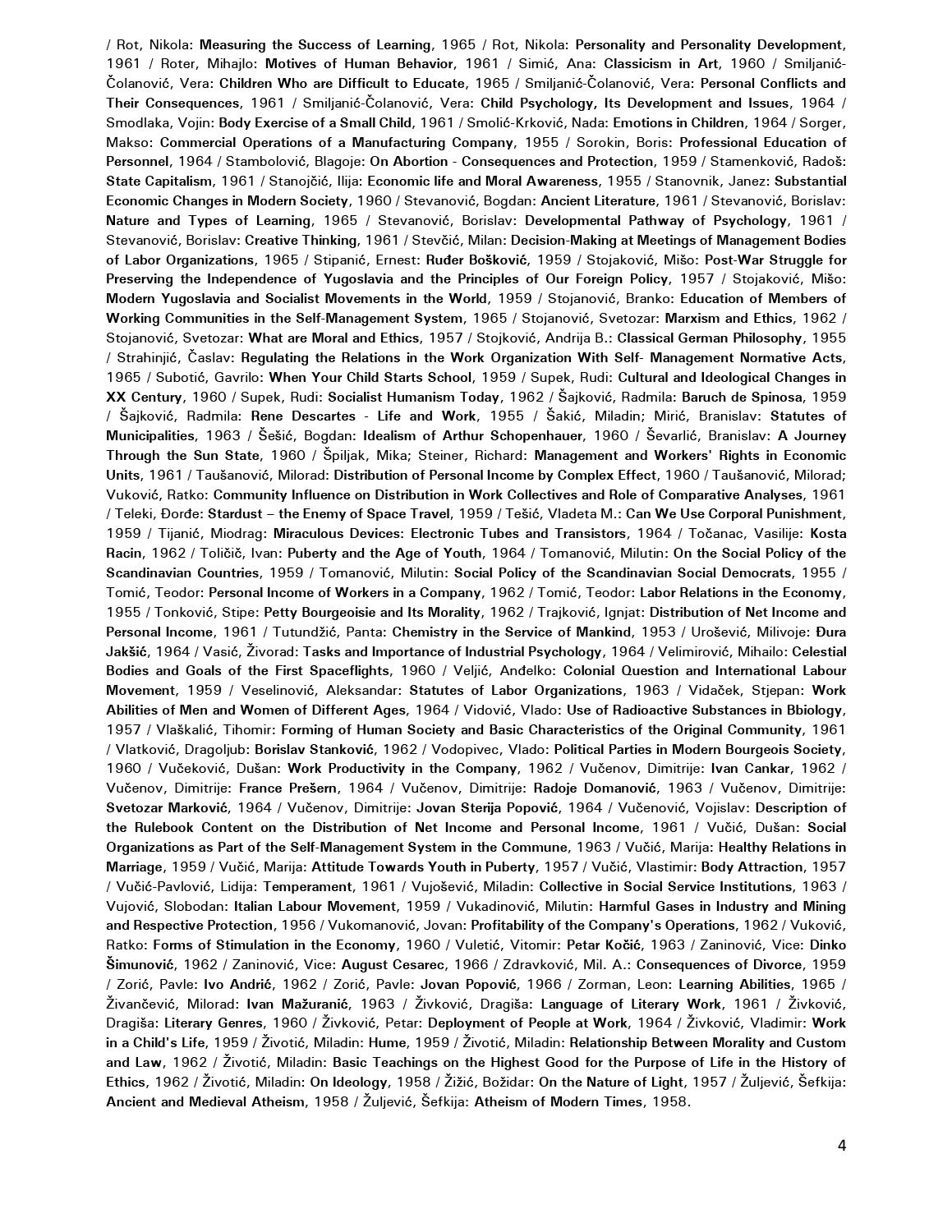Irena Lagator Pejović
works
- Lines, Values, Coexistences
- United Species
- Means that Can Contribute to the Phytoremediation of Polluted Areas
- Saved Books. The Art of Transmitting the Knowledge Without the Need for Subsequent Reparation.
- “I Would Put All Mighty Weaponry Into the Museums That No One Visits”
- Expanses of Love
- “If I Were Ronald Regan”
- Nets, Nodes, Horizons
- Workers University
- My Father’s Salary
- Fiscal Verses. Reprogramming the Machine
- Missing Content
- The Knowledge of the Limited Responsibility Society
- Shared Air
- Blurred Landscapes
- There is Already a Feeling of a Flow
- Symbiotic Collection
- Maximum Profit - Minumum Time
- This is Not a Landscape Any Longer. Tolerance, Transparency, Transition.
- Nature Culture
- Pillars and Horizons
- Where is the Monument?
- Forward Play Reverse
- Life and Institution
- Capital Culture Cuts
- Two Safes. No keys!
- Non LLC l.l.c.
- Plastic Water
- Society and Documents
- Exchange Value
- Work in Public Space
- Institution Nature
- LLC versus Non LLC
- Abbandoned Cinema
- Freedom Security Progress
- Occupying/Liberating Space and Time
- Directions
- Image Images
- Property
- Dissapearance Appearance
- Further than Beyond
- Image Think
- Ecce Mundi
- Camera Imaginata. The Means for Exchanging the Power of the Imagination
- Means for Intensifiying a Sense of Poetic Reconstruction of the World
- The Society of Peaceful Coexistence, Santa Croce sull’Arno
- Installation for Improving the Sense of Responsibility
- Equation Function
- Limited Responsibility Society, Santa Croce sull’Arno
- Resistence Reservoir
- Limited Responsibility Society, Polignano a Mare
- Limited Responsibility Society Automatism
- Experience Economy History
- The Society of Peaceful Coexistence, Belgrade
- Responsitorium Horizon Poems
- Time of Limited Responsibility Society
- Limited Responsibility Society Experiment, Salzburg
- Present Space Expansion
- Cultural Barriers to Growth
- Continuous Limited Responsibility Society
- Knowledge of the Limited Responsibility Society
- Limited Responsibility Society Experiment, Strobl
- Limited Responsibility Society By Night
- Limited Responsibility Society, Cetinje
- Inverse Spaces
- Our Colored Everyday
- Machine Error. Shape a Book
- What We Call Real
- After Memory
- Next
- Is It Still Winter, Outside?
- The Way We Live
- How Small is the Universe
- Living Space
- The Society of Unlimited Responsiblity
- Own Space
- Living Room
- Near Universe
- An Embrace in the Space
- Light in Space
- Please Wait Here
- Wash Inside Out
- What is Missing
- Temporary Dumping Place. Rotations in the Given Space
- Opening of the Book
- Registrar
- May I Help You
- Passerby
- Are You Happy Now
- BBBBeauty
- Tell Why
- Witness of Time - Now
- Witness of Time
- It is Made for You
Workers University
2023
interactive installation consisting of 825 books/single essays from public and private libraries and archives being part of the Workers University edition of Publishing company “Rad“
installation dimensions: 200 x 1600 x 4 cm; single book: 17 x 11cm
Courtesy of: the artist,
National Library of Montenegro “Djurdje Crnojević”, Cetinje,
Public Library “Braća Nastasijević”, Gornji Milanovac,
National Library Kruševac,
Public Library “Vladislav Petković Dis” Čačak,
Inter-municipal Historical Archive, Čačak.
Exhibition/Venue: Exhibition/Venue: Irena Lagator Pejović, Expanses of Love, Art Gallery „Nadežda Petrović”, Čačak, Serbia, curated by Patrycja Rylko and Julka Marinković, 2023.
Photo: Ivan Petrović, Irena Lagator Pejović
Artistic installation Workers University conceptually and realistically draws on the eponymous publishing house “Rad” (Labour), founded in 1949, which commenced its operation as a publishing department within the Central committee of the Yugoslavian union association. This department had the task, with its popular-approach manuals for professional education of young workers in all branches of industry and craftsmanship, highly valuable in the post-war shortages, to aid the significant activity of the Union in professional training of personnel in renovation and rebuilding the war-torn country and its economy. In time, the Rad’s field of work significantly expanded and became thematically enriched, thus from a small publishing department of a union-political publishing section it grew into a publishing house that, with its recognizable concept, found its place among the most prestigious Yugoslavian publishing houses. What contributed to that reputation was also the extremely valuable and popular libraries with works from the writers of Yugoslavian and world literature, like the famous “Reč i misao” (Word and thought), founded in 1959, as a first library of pocket editions that were published in large number of copies, at the acceptable price.
The „Radnički univerzitet“ library is recognizable by their simple-design brochures, with rectangularly coloured fields on a white background. At first, it was intended of the needs of the ideological-political education of the personnel for economic and social fields of work. However, the quality of its contents, widely encompassing subjects of general-education and popular literature of almost all areas of social, technical and natural sciences, culture, and art, led to its application in the education of students of primary and secondary schools, thus it was published in very large number of copies. (Julka Marinković)
Collection of brochures "Workers University" has several wholes and volumes, like: astronautics, astronomy, automatics, marriage and family, company economy, electronics, ethics, philosophy, industrial psychology, basics on scientific socialism, literature, commune, international labour and sindical movement, science and religion, raising and educating the children, work productivity, psychology, workers’ self-government, division, sociology, art, constitution of SFRY… The artist began to buy them off the families that were selling out their libraries during the period of pandemic isolation.
For the needs of this installation, the artist, in cooperation with the art gallery „Nadežda Petrović“ collected a significant number of original copies from the holdings of several libraries of the former Yugoslavian republics, as well as the private archives. The titles were published simultaneously in both writings, Cyrillic and Latin. It coincides with the proclaimed efforts in regards to equality and solidarity in a multi-ethnical, multicultural, and multiconfessional society, such as the Yugoslavian was. Still, the research can point out the fact that these booklets were revoked from many library holdings due to their failure of being current. On the other hand, the Workers University installation shows that numerous preoccupations of previous systems and attempts of organizing the everyday life are equally relevant today.
The exhibited items are available to visitors for reading for the duration of the exhibition. However, one part is not accessible. The titles placed in that zone of this interactive installation are a reminder to the stopped, abandoned and unrealized dreams of one social utopia. At the same time, these inaccessible zones, as well as the horizons of the presented books, can be understood as the initiators of the questions and imagination on how the future, whose inhabitants we are today, was imagined from a perspective of a community whose most numerous editions were the ones from the area of literature, philosophy, and art. (Irena Lagator Pejović)
